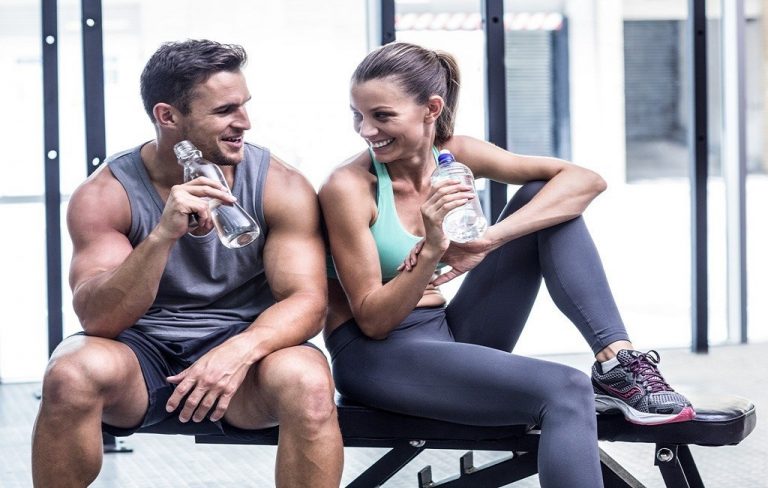All sorts of elegant bags, jars, and plastic bottles, which are now packed with soft drinks and water, a great many. Fears and myths in connection with the exacerbation of the problem of ecology, even more.
Headlines report that in the production of many types of plastic poisonous chemicals are used that can penetrate into the products. The most famous and formidable characters of the articles are bisphenol A and phthalates. Let’s figure out how rumors abound on the Internet: myth or reality?
1. Myth: Most plastic bottles contain Bisphenol-A
Reality: The issue of child safety is always paramount for parents. In recent years, the EU countries have carried out many studies on the feasibility of migration of bisphenol A from polycarbonate products to food and beverages. These studies have shown that the release of bisphenol A in food is extremely low, less than 5 particles per billion. The conclusion is that less than 0.0000125 milligrams of bisphenol A per kilogram of weight falls into the human body.
This is 4,000 times less than permissible according to the standards set by the Environmental Protection Agency (USA). Even if a child drinks from a bottle every day, there is no reason to worry. That bisphenol A harms the child’s body, the kid must eat and drink at least 600 kilograms of food and drinks that are in contact with polycarbonate every day.
Advice: Do not store water in baby bottles for a long time. Wash and sterilize containers in a timely manner.
2. Myth: PET bottle is reusable.
Reality: PET bottles should only be used once, and then handed over for recycling. This is due to the fact that this type of plastic is not resistant to alkalis and high temperatures and can not be washed and disinfected well before reuse.
In case of improper use, namely, when heated by high temperatures, it is possible to destroy the polymer and actively release toxic substances into food and air. But do not be scared, but use bottles for water correctly!
Tip: Look for places to put containers for recycling on the Internet or check with water suppliers, may provide such a service.
- Do not heat the PET container in the microwave.
- Do not pour hot liquids (water, tea, warm milk) into PET bottles.
3.Myth: After opening the bottle, try to use it for 5 days, otherwise harmful substances will be released into it.
Reality: Studies show that plastic under normal conditions is not able to isolate harmful substances in the bottle. But after opening the bacteria together in the dust in the air inevitably get into the water, and if the water does not contain preservatives, begin to multiply actively. In a few days (especially in a warm and sunny room) the concentration of microorganisms can reach such an amount that the water will have an unpleasant smell (water will stagnate), precipitation is possible. Who of us will like this?
Advice:
- Drink water for 5 days and do not bother.
- Never drink water directly from the bottle, unless you are going to finish it the same day. Do you remember how your mother reminded you not to drink from your throat?
- If you need to storage containers for more than 5 days, then leave the water in the refrigerator or on the balcony during the cold season.
- If you (your family or office) cannot drink a 19-liter bottle of water for 5 days, choose a smaller container. Ideally – a one-off.
Check This Out: Working Out at A Gym Can Be Effective And Interesting
4. Myth: You cannot store plastic bottles in rooms where it is hot or under direct sunlight, harmful substances of bisphenol A, phthalates, chlorine, dioxins, etc. will be released into it.
Reality: Usually the sun can not heat water in a bottle to the temperature when such substances can hypothetically stand out. The sun or high temperature indoors promotes the reproduction of undesirable microflora in the bottle (unpleasant odors, loss of liquid transparency, change in taste), and not dangerous discharges of harmful substances into the water. For example, polycarbonate (marking 7) withstands the water temperature to 100 ° C, at about this temperature it is washed in the factory. Bottles (usually 19 liters) of polycarbonate, as well as plastic ones, can not be left under the sun’s rays: bisphenol A is not involved, just in the sun, blue-green algae and other animals can develop in the water.
Advice:
- Always store water in a dark, cool place. Winter houses are ideal to store water near the cold balcony door.
- In summer, do not store water in the car’s interior or trunk
5. Myth: There is a protective layer in the plastic bottles and container, which is damaged in case of repeated use.
Reality: There is no protective layer in such a container, reuse is not recommended for hygiene reasons. One-time dishes are difficult to wash without hot water and alkaline detergents.
Tip: Use paper disposable dishes. In addition to the environmental friendliness of the material, it also looks much more attractive.
6. Myth: At packing of products in a food film from it harmful substances pass to products, therefore it is necessary to cut off from them the top layer.
Reality: Food films have become the most widespread as a means of packaging due to low cost and the ability to work manually, without the use of additional devices. Vacuum polyethylene, in which meat and fish, vegetables, cheese and other products are often packed, retains their freshness longer, but in an oxygen-free environment, certain types of bacteria multiply, activated after the package is opened. And if you still keep it open in the refrigerator for a while, the chances of getting poisoned dramatically. In case you have heated food in a film, we do not recommend using it since harmful substances have already been released.
INTERESTING: you probably bought in the store semi-finished products on a tray, covered with a film. About the film everything is clear, but white trays are often made of foam, a material that emits carcinogenic poison.
To avoid health problems, the film should be stored at a temperature not higher than +70 ° C, and the trays should never be heated. For your safety, it is important to use the plastic as directed. Always carefully read the markings on the bottom of the packages. Some types of plastics are more susceptible to destruction when heated, others – when exposed to washing alkaline substances, and third – to alcohols and fats.
By the way, for sure, many of you wrap while traveling suitcases in film, but not everyone knows that the food film is made of another material-polyethylene.
Tip: Learn to read the labels on the container. When used properly, the plastic is safe for the products.
Bottled water in a plastic container is a marketing move, it’s better to drink water from the tap.
Reality: You drink tap water, and in the body for 25 years, 27 grams of boron, 1 liter of mineral oil, and 3 kg of iron accumulate, an overabundance of which kills our kidneys. For an adult, 15-20 kg of nitrates is fatal. And what about the babies? When tap water is used to prepare nutrient mixtures, there is a risk of a terrible disease – water-nitrate methemoglobinemia. This disease affects the heart and respiratory system. We reassure ourselves that we regularly boil water, but remember that boiling is not an option! But boiling is a completely different topic.
Do you know how to clean the water from the tap? The most effective water purifier is chlorine (Cl) and ozone (O3), when combined with them, 99% of bacteria die. The advantage of ozone is that when it is added to water, it quickly collapses and does not remain in the water, so it was used at water treatment plants. But how to deliver clean cleaned water to the consumer through dirty worn pipes? Nobody says aloud that chlorinated water is dangerous. Why? Another way to clean the water has not yet come up.
Tip: Choose active and mineral water that will deliver beneficial macro and microelements to your body.
It is better to buy water in the glass, so it’s better for the environment.
Plastic bottles are the leader among the basic materials on energy efficiency and environmental friendliness. In addition to low emissions, consider that the plastic is lightweight, has a low thermal conductivity, is resistant to damage and is universal. It is easy to hand over for processing in our country, and after multiple disposals, it remains safe. Of the secondary plastic make different products. Glass wastes In Russia are processed in small quantities. But even such a quantity of recycled waste provides preservation of about 10,000 hectares of land, which could turn into huge landfills.
It is clear that any raw materials that can be recycled should be sent to the necessary institutions. How much glass and plastic will decompose? The glass is not biodegradable. A simple glass bottle from underwater is characterized by a decomposition time of 1000 or more years. A plastic bottle should also decompose, although its life is slightly shorter. Without recycling and processing, our entire planet in a short period of time would be completely filled with plastic and glass waste.
Tip: Find out where in your city you can give a bottle for recycling.
Let’s return to the transportation of plastic bottles. What’s easier to transport: wagon with glass or plastic? Plastic saves 20% fuel consumption and reduces the emission of harmful substances. An example in figures: transporting 14,000 liters of water in plastic bottles of 0.5 liters over a distance of 1600 km will require 355 liters less diesel fuel and will reduce CO2 emissions by 60% than transporting the same amount of water in the glass. In addition, glass containers can easily crack during transportation and PET-strong. Damage to plastic utensils is greatly exaggerated and manifests itself when it is misused.
Keep Reading: Truths And Lies Behind Energy Drinks
Summarize. Yes, you are right. The glass is practically impenetrable. The packaging of such material is suitable for oxygen-sensitive beverages. The lack of glass is obvious; it is brittle and heavy. Complex transportation, the processes of glass melting and the formation of new forms lead to enormous energy costs. How many harmful substances will a wagon throw glass into the atmosphere while it reaches the place of utilization? Therefore, disposable plastic bottles are preferred for bottling water.
The advice in conclusion: use plastic designed only for the food industry and follow the recommendations for use.






















+ There are no comments
Add yours